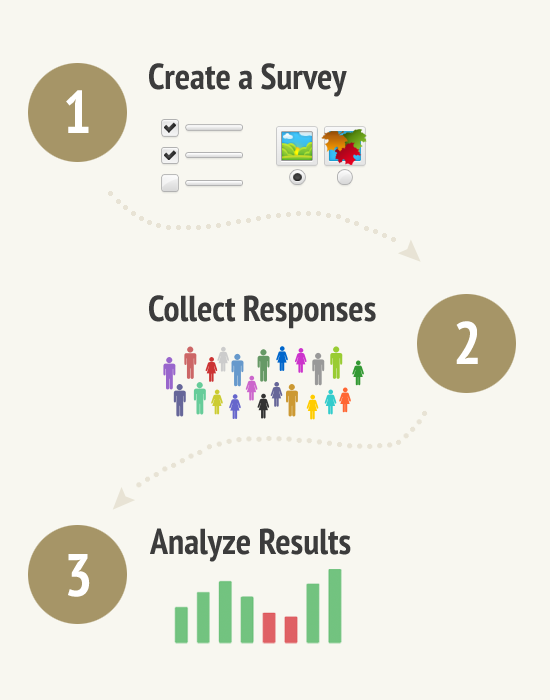Online Surveys and their Advantages / Disadvantages
Welcome to the last block within this series. In this article we discuss online questionnaires and their advantages and disadvantages. Online questionnaires are one data collection method within quantitative research. This type of questionnaire can be answered over the internet, enabling its author to obtain answers from anywhere. We’ve already written in the past about how to create an online questionnaire.
Advantages of Online Questionnaires
The questionnaire is created, distributed, and filled out, and data is collected, online via a survey application. One advantage of online tools is the machine (automated) processing of questionnaires.
The Low Time Demands for Online Research
Quick creation and processing of surveys is a typical and desirable trait. Everyone, no matter how inexperienced, can quickly manage to create a survey, send it out, and get answers back. It all happens in real time.
Interim results and questionnaire analysis
Online systems for creating questionnaires can process respondents’ answers already while the survey is ongoing, and so they enable the researcher to immediately obtain and analyze results. Automatic question processing, which modern questionnaire applications can use efficiently to generate graphs and tables, saves inexperienced users and researchers, above all, from mistakes and wasted time.
Multimedia in Your Survey
Including and using multimedia in online surveys is very easy. Thanks to information technology and ordinary computer programs (e.g. web browsers), media such as pictures, animations, video, music, and more can be included in your questionnaires.
Low Questionnaire Processing Costs
- Online surveys are the least expensive surveys. There are no costs for questionnaires, questioners, telephone calls, or any of the other complicated processes that are traditionally connected with collecting answers.
- No labor costs during primary data processing. (Primary data processing means unifying and describing the individual pieces of data obtained from the questionnaire.)
- You don’t have to pay anyone for processing your data, transcribing it from multiple questionnaires, producing various answer tables in Excel, etc. Creating online forms and saving them automatically eliminates the risk of errors made during the manual transcription of answers.
Distribution and Answer Collection
- An online environment makes survey distribution very quick and easy. Just send out invitations for questionnaire completion over email, and then distribute a website or blog address, or distribute it on social networks.
-
There are many options for distributing questionnaires over the internet. You can use paid PPC ads, purchases of respondents in various panels, etc. After distribution, you just wait for the collection of answers from the respondents you’ve addressed.
Exporting Answers to Excel, SPSS, etc.
With the machine processing of online questionnaires, answers can be converted to formats made for processing in statistics or spreadsheet software (Microsoft Excel, OpenOffice Calc, SPSS, Statistica, etc.). These programs are then used for secondary analysis of the data obtained. Typical formats for the exported files include XLS, CSV (for SPSS), HTML, and XML.
Easy Management
Thanks to its interactive environment, an online survey is easily manageable even for inexperienced respondents. They don’t have to go anywhere, they can fill out the questionnaire whenever they want, and they feel more anonymous. All this increases respondents’ willingness and your response rate.
Disadvantages of Online Questionnaires
Respondent Identity
Online questionnaires are distributed over the internet, and primarily via email. They are then filled out, with no checks by questioners, on a variety of computers and mobile devices used by respondents. It is normally very hard to check if the right person is filling out the questionnaire. However, certain tools, such as Survio, do offer such identification.
Response Rate
If an online survey is not distributed efficiently, and above all targeted at the right group of respondents, then it is difficult to achieve a good response rate. So think carefully about whether or not your distribution channels are strong enough to bring you enough results. One important factor influencing the response rate for any questionnaire is the motivation for filling it out. This can include gifts, money, rewards, vouchers, etc.
Question Complexity
Online questionnaires cannot afford to use excessively complex or context-based questions. Respondents may not understand such questions correctly, and because there is no questioner at hand to help them out and to explain things in detail, they may lose motivation due to not understanding the questions being asked. The solution is to ask questions of simple types, and ask them clearly and understandably.
In the next piece in this series, we go over how to improve a questionnaire’s quality and its return rate. We describe how to structure an online survey, and what traits it should have.
If you have any questions, suggestions, or remarks (on this series or otherwise), please don’t hesitate to contact us via Facebook, Twitter, G+ or e-mail.
Glossary
- Context-based questions – These are questions connected with a particular topic. They broaden the topic researched with knowledge that is hard to capture and process via a questionnaire
- Respondent – a survey participant who answers questions
- Response rate – the extent to which questionnaires are filled out and returned
Create your own questionnaire or survey for free
Setting up your first survey is quick and straight forward. Choose from one of 100 predefined templates or create your own from the scratch. Start getting your first responses in 5 minutes.
Create your own survey








